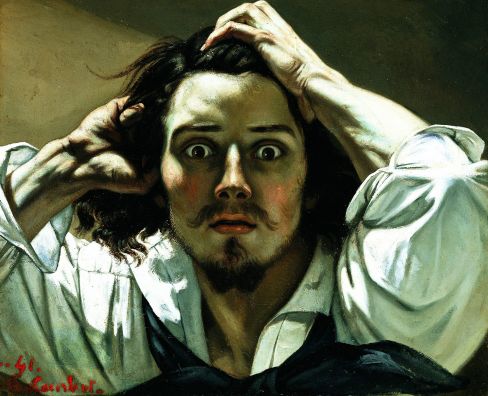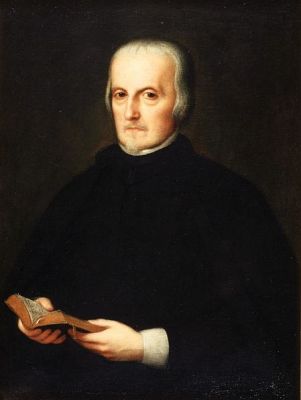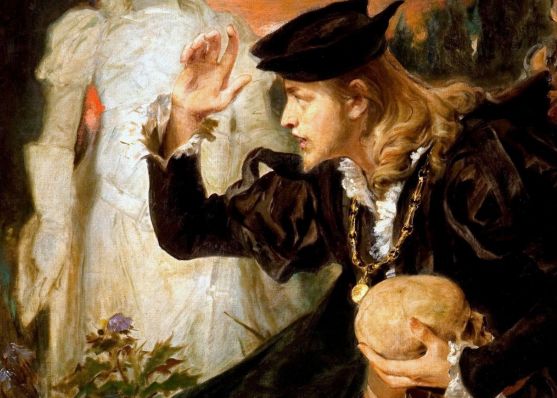Neo-classical Theater – Concept, Definition and Characteristics
Contents
What is the Neoclassical Theater?
The Neoclassical Theater, arises from the poetic writings of Luzán in 1737, product of an intense debate in which all aspects of dramaturgy are discussed, such as aesthetics, the rules to be followed by the plays, the art of representation, the layout of the premises, the social purpose among others.
Challenging and defending the works of that time and the degraded copies that were made of them, referring to authors such as Lope, Calderon, great writers of the previous century. Therefore, a series of reforms were proposed and approved, which later conformed the principles of the Neoclassical theater, such as:
- The total separation of genres to avoid confusion, the conservation of the classic rule of the three units, of a single action that takes place in a single place and in a maximum time of 24 hours.
- The reinforcement of the didactic purpose through the use of useful themes for society, sustaining the principles of practical teaching.
- The strengthening of the plausible approach, in accordance and similar to reality.
- The structuring of the plays in three acts.
How did the Neoclassical Theater develop?
Neoclassical theater refers to a movement that occurred in the mid-17th century, defined by the ideas and styles of ancient Greek and Roman societies. Therefore, this neoclassical theater is formed with the principles of the people of the time that placed a heavy focus on decorum, dignified and realistic behavior, since they believed that the main reasons of theater was to provide entertainment and teach a lesson.
Thus, the main characteristic of neoclassical scenography was the large intricate scenery, elaborate drama and strict concern for the classics coming from painting, as was the movement, with most productions characterized by five acts, few performances and a high level of improvisation. The movement began in France but quickly spread throughout Europe and beyond.
The philosophy during the neoclassical era was that previous periods had been too lax, focusing too much on the emotions and the individual. Of the time they believed that it was necessary to exercise some restraint as a result and concentrate more on what each person can contribute to society as a whole. Therefore, inspiration for these reforms was sought in the cultures of the ancient Greeks and Romans, the original classics, and an attempt was made to return to the way the groups had handled life and the arts.
In this sense, the so-called five rules were followed, because the neoclassical attitude toward excess and the individual led to the development of this strict set of guidelines for what was appropriate in the theater. These five basic rules were: purity of form, five acts, verisimilitude and realism, decorum and purpose. Theatrical houses, therefore, generally rejected scripts and productions that did not meet these requirements.
Playwrights and actors in the neoclassical period officially recognized only two types of theater, comedy and tragedy. They never mixed these together, and the restriction led to the use of the now well-known symbol of the pair of happy and sad masks symbolizing the theatrical arts.
Moreover, additional provisions governed the subject matter and characters that could appear in each genre of neoclassical theater. Thus, comedies, which were satires and comedies of manners, tended to focus on the lower classes of society, while tragedies portrayed the complex and fateful life of the upper and royal classes. Likewise, adherence to these genres was crucial to the success of the play, and deviation from class boundaries went against the order of the classics.
The way in which the theater was to be structured with the exact five acts linked to the three principles, or unities, were devised by Aristotle. As a philosopher and analyst, he believed that realistic theater required the necessary unity of action, place and time, i.e., very few plots, restriction of changes in location or geography and keeping the timeline of no more than 24 hours.
Similarly, dramaturgy that moved to different formats generally received heavy criticism. Therefore, due to the limitation of the five rules, more serious productions were given only one or two performances, because those involved wanted to avoid creating spectacles and attract the elite, learning in society, thus, resulting in much smaller audiences.
The Scenography, Organization and Costumes
The scenography, set and costume sets of the neoclassical theater were dramatic, elaborate and rich. They were designed to provide a lush backdrop to each scene and to help the audience bring themselves into the drama. Another goal was to provide a realistic illusion of depth and perception. Therefore, sets were redesigned during this period with dramatic arches to highlight scenes and multiple points of entry to the stage.
The idea of changing scenery and backdrops becomes more prominent, particularly with the invention of the pulley system, to allow the pieces to move more quickly across the stage. Similarly, lighting and sound effects enhance the mood and message of each scene, enriching the dramatic experience.
Naturally, the gray garments would have looked somewhat out of place in the context of these new sets and scenery. Thus, while the costumes maintained a sense of realism, they were still very colorful, often with lace and other embellishments to make them more attractive. Sometimes masks were also used in the performance, maintaining the comedy style of the neoclassical theater.
Improvisation
On the other hand, for improvisation in many cases, playwrights provide only a loose outline of a plot, and actors were expected to improvise to fill in the gaps. This was more frequent with comedies, but occurred in both forms, as acting was often a spontaneous decision that did not always allow much time for writing or rehearsal.
In some companies, actors were hired who specialized in a very limited number of characters so that they could then pick up better people as they went along, and very few actors stuck to the same performances for their entire careers.
The Introduction of Women
For hundreds of years, only men could be on stage. The general opinion was that women should not participate in public performances and stagings, in a more prominent position, and some people believed that women were so busy thinking about other things that they could not possibly remember and deliver lines properly.
Thus, prepubescent boys and men could manipulate their voices to result in female roles. During the neoclassical period, however, women could become shareholders in theater companies and participate in productions, resulting in the payment of the first professional actresses.
What are the types of Neoclassical Theater?
In the neoclassical theater, the genres that stood out the most were: neoclassical tragedy and comedy.
Neoclassical Drama
The concept of drama originated in the writings of Italian scholars in the 15th century and came to dominate the stage in the 17th and 18th centuries, giving rise in France to neoclassical drama. Thus, neoclassical theorists advocated a return to the values and conventions of classical Greek drama and were then configured under these principles.
In particular, great importance was attached to Aristotle’s poetics and to the units of time, place and action in theatrical plays. Thus, it was in France, where the units became rigidly formalized and formalized, in the neoclassical theatrical style, reaching its highest expression in the works of Cornielle and Racine (although Corneille’s 1637 tragicomedy Le Cid caused a storm by the deviation from the units).
On the contrary, neoclassicism never took root in the English theater, despite its illustrious defenders such as Johnson and Dryden, whose rhymed heroic tragedies had some success. Thus, Joseph Addison Cato’s blank verse tragedy Cato (1713) was probably the most popular neoclassical play on the English stage.
In France neoclassical tragedy eventually gave way to bourgeois drama although it enjoyed a brief revival in some of Voltaire’s plays. The movement as a whole was swept away by the advent of romanticism.
Tragedy in the Neoclassical Theater
In an attempt to bring back the old form that had been going on for some time through the English channel, in France, the genre of classical French tragedy is created, whose parliaments are by Pierre Corneille Cid (1637) and Jean Racine Bérénice (1670) and Phèdre (1677), so they did not try to make a popular theater of Elizabethan theater.
The plays were written by and for the intellectual aristocracy, which were staged in elite theaters, sponsored by royalty and nobility. Past the bustle and splendor of the Elizabethan tragedies, with their additions of whatever manner and moods of thought of playwrights of that time, French playwrights submitted to the severe discipline derived from Greek models and especially to the rules, of their own interpretation, established by Aristotle. Strictly, the units of place, time and action were observed.
A frequent theme in the tragedy of the neoclassical theater was the conflict between passion and reason. The path of reason was the path of duty and obligation (noblesse oblige), and that path had been clearly traced by moralists and philosophers, ancient and modern. In this sense there was nothing exploratory in French tragedy, for moral and spiritual norms were insisted upon.
Norms were never criticized and tested when Aeschylus challenged the gods of Olympus or as when they were portrayed by Marlowe with great sympathy, a surprising reach of the renaissance. Thus Corneille’s Cid shows how duty triumphs over passion, and, as duty rewards the hero and heroine who are happily united.
On the other hand, in eighteenth-century Spain, tragedy was considered the most appropriate form for didactic theater, so this type of work ended up failing because it was stifled by strict adherence to neoclassical rules, the absence of theatrical sense and the lack of a tradition and an audience.
Thus, the historical tragedy in the Spanish neoclassical theater, was starred by exemplary characters who served as models and who underwent trials in which their virtue, patriotism and nobility triumphed, resorting very often to past historical heroes. In short, it portrays a world in which only sublime feelings fit, the protagonists belong to the upper social class and where the ending is usually happy.
Comedy and neoclassical theater
Comedies written during the Renaissance period were often similar in scheme, it involves a complex situation, a number of characters, misunderstandings, mistaken identities and the like are created, then an element of suspense is added and finally all the complications are revealed to the satisfaction of most of the characters.
Whereas, the Romantic Comedy had nothing directly to do with contemporary society. In fact, the setting of most of the performances was in distant kingdoms or exotic foreign countries. Any immediate social reference was usually embedded in the theater’s fanciful history.
Comedy in neoclassical theater
For its part, in the neoclassical period, contemporary society became one of the central concerns of the comic playwright. An era of balance, precision and regularity, as the neoclassical age is generally considered, insists on certain norms of behavior in society. The laughter of the irregular, eccentric individual must be brought back to normality. While the same principle was applied to Shakespeare’s comedy in general, with the identification of real social types in the performances, it was not as obvious as it became in Molière.
The very subject matter of neoclassical comedy became implicit problems in society. Although this type of drama, “social comedy,” requires a certain faith in the value of society, the playwright does not necessarily approve of all aspects of his contemporary society. Therefore, laughter is invoked, when a character deviates from his or her behavior in the sanctioned norms of society, but also this character is often evoked from the “norm” itself.
Thus, in neoclassical comedy there is a repeated emphasis on the “rational” perspective of behavior, such is the case of Voltaire’s Candide which was ridiculed for the irrational acceptance of a popular philosophy. In England, earlier, Jonathan Swift referred to rationality in a similar way. In many of Molière’s performances the characters, even when in error, keep their actions within purely rational motives and in a more collected manner.
They repeatedly express an exasperated desire that the rest of the world act similarly rationally. Therefore, the reader may be surprised by the number of times the word “reasonable” appears in this context in Molière’s plays. It is often used by oppositional characters to add force to their own contradictory views.
For his part, in the Spanish neoclassical theater, Leandro Fernández de Moratín stands out as the greatest exponent, who is the only one of the neoclassical playwrights who manages to create a valuable form of comedy, merging urban comedy and the usual satire. He thus unites two attitudes, one critical of intellectual root that highlights the vices and errors of society, the other sentimental of affective root that emphasizes truth and virtue.
In this way it fulfills the didactic purpose of neoclassical theater. Thus, the characters are closer to the spectators as they describe the middle class. Parallel to these two currents, the so-called costumbrista theater was developed, whose main representative is Ramón de la Cruz.
Costumbrista theater
It is that which reflects the life, the sensibility of beings and environments that are recognized to the author and which he tried to transcend by the usual means of his trade. The main characteristic is the Sainete: a short play (one or two acts) of comic character that can be written in verse or prose. The main cultivator of Sainetes is Ramón de la Cruz.
What is the legacy of the Neoclassical Theater?
While the Puritans closed the theaters in England, one of the great flowering of drama was occurring in France. By the 1660s, neoclassicism had emerged as the dominant trend in French theater. Thus, French Neo-classicism represents an updated version of classical Greek and Roman theater.
Neo-classical tragedy was the most didactic and moralizing form of theater. It was intended to convey an ideal in defense of freedom and opposed to the tyranny of the governments of that time. While the neoclassical comedy was aimed at the middle class, it had particular characters, and had a domestic theme with a comic, humorous and simple language, with which it was intended in a way to relax the state of things that were lived at that time.
In this sense the theater of neoclassicism was an important part in the development of literature and infrastructure, to get to know the one we can appreciate today, everything has been a constant evolution of technique, therefore, everything we have today as theater, was due to the incorporation of new forms and scenarios that had as a basis among others the neoclassical theater.
Who were the major representatives of the Neoclassical Theater?
While there were many successful playwrights during the neoclassical movement, three playwrights achieved significant success and notoriety. Pierre Cornielle (1606 – 1684) is often called the father of French tragedy, writing scripts for over four decades. Jean-Baptiste Poquelin, better known as Molière (1622 – 1673), renowned for his comedies. Jean Racine (1639-1699) who was a playwright beloved for his simplistic approach to action and achievement of linguistic rhythms and effects.
Thus, these three men were able to take elements of classical Greek and Roman literature and transform them into plays that adhered to neoclassical standards of decorum, time and space.



